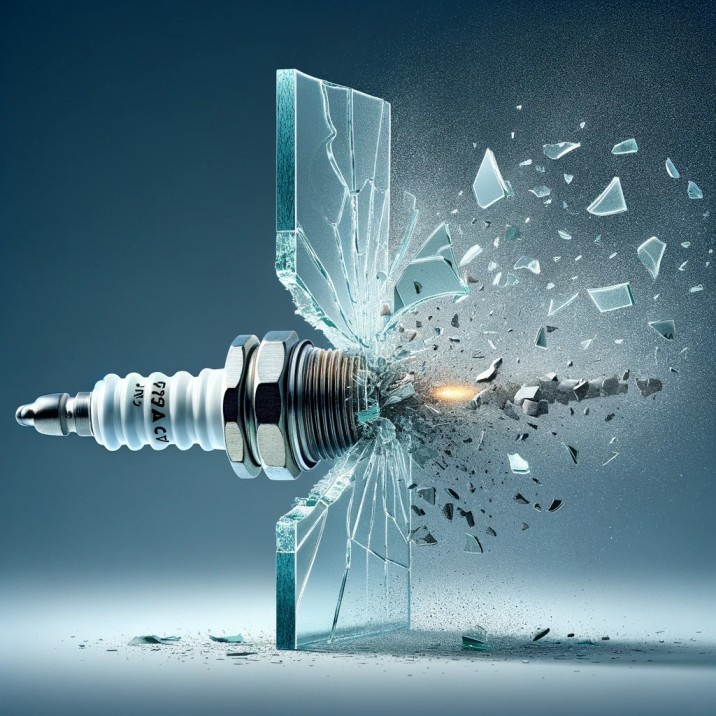Spark plugs can break glass, particularly tempered glass like car windows, because the ceramic part of the spark plug is much harder than the glass. When a small piece of this ceramic hits the glass, it creates a focused point of stress. This stress disrupts the internal balance of the tempered glass, causing it to shatter quickly and easily.

Spark plugs are essential components in gasoline engines, igniting the fuel-air mixture to start and maintain combustion. The part of the spark plug that breaks glass is the ceramic insulator, made from aluminum oxide ceramic. When a piece of this ceramic, often referred to as “ninja rocks,” is thrown or pressed against tempered glass, it causes the glass to shatter.
Properties of Tempered Glass
Tempered glass, used in car windows and other safety applications, is manufactured through rapid heating and cooling processes. This treatment creates a balance of internal stresses, making the glass stronger than normal glass. However, this also makes tempered glass more susceptible to shattering when disturbed at certain weak points.
Why Ceramic Works
The hardness of the ceramic material is key to its effectiveness. The ceramic of a spark plug is much harder than tempered glass. When it comes into contact with the glass, it creates a concentrated point of stress, disrupting the internal balance in the glass structure. Even a small piece of ceramic can generate enough stress to cause the glass to shatter immediately.
Physics Behind the Breakage
The principle behind this is the hardness scale in materials science. Materials with a higher rating on the hardness scale can scratch or affect materials with a lower rating. Since aluminum oxide ceramic is higher on this scale than tempered glass, it can easily disrupt the glass structure.
Safety and Misuse Concerns
While this property can be beneficial in emergency situations for quickly breaking car windows, it has also led to the misuse of spark plug pieces in thefts and break-ins. This has raised concerns about the ease with which car windows can be broken.
The ability of spark plug ceramic to break tempered glass is a fascinating interplay of materials science and physics. It demonstrates how specific material properties, like hardness and internal stress, can interact in unexpected ways. While useful in emergencies, this characteristic also highlights a vulnerability in tempered glass and underscores the need for awareness and caution in its use.
What is a spark plug?
A spark plug is a critical component in the ignition system of gasoline-powered internal combustion engines. Its primary function is to ignite the air-fuel mixture inside the engine’s combustion chamber to initiate the power stroke of the engine cycle.
The spark plug is designed to deliver an electric spark across an air gap, created between a central electrode and a ground electrode. This spark ignites the compressed mixture of air and fuel, creating a mini-explosion. This explosion forces the piston down in the cylinder, generating the power needed to drive the engine.
Located at the top of each engine cylinder, spark plugs must withstand extreme heat and pressure within the combustion chambers. They are built to be durable, yet they require regular replacement due to wear and exposure to harsh conditions inside the engine.
The efficiency of a spark plug directly impacts engine performance. A well-functioning spark plug ensures smooth engine operation, optimal fuel efficiency, and reduced emissions. Conversely, a faulty or worn-out spark plug can lead to engine misfires, reduced power, increased fuel consumption, and elevated emissions.
In summary, the spark plug is a small but vital part of an engine, playing a key role in its functionality and efficiency. Its ability to reliably ignite the fuel-air mixture makes it indispensable in gasoline engine operation.

